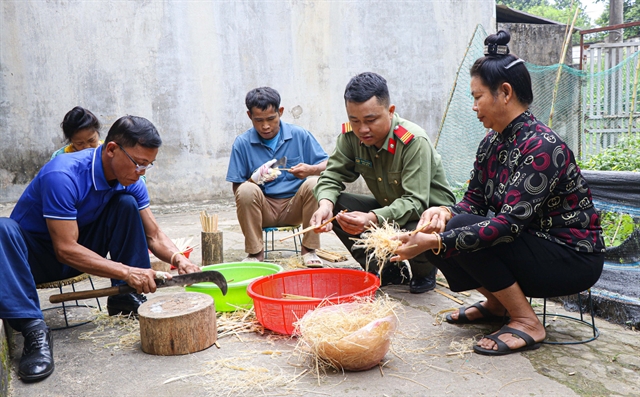 Politics & Law
Politics & Law

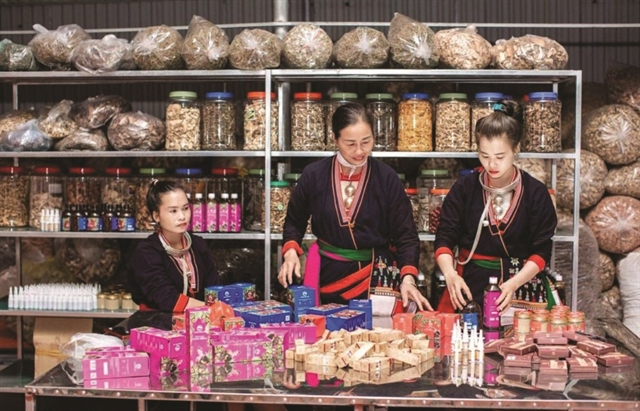 |
| Dao women are seen with their traditional herbal medicines. Photo tapchicongthuong.vn |
By Đinh Thuận & Lương Hương
Nestled by the foot of a mountain, the villages of Hợp Sơn, Yên Sơn and Hợp Nhất in Hà Nội’s suburban district of Ba Vì are surrounded by lush greenery all year round.
The area is home to the Dao ethnic minority, who are renowned for their traditional herbal medicines that have been widely used in treating various illnesses.
The local authorities have been making great efforts to preserve and develop the traditional medicine of the Dao in Ba Vì. They also aim to safeguard their cultural identity while establishing an appealing product for tourists.
Unique practice
 |
| A tourist views the traditional herbal medicines of the Dao people. VNA/VNS Photo Đinh Thuận |
The roads leading to the villages of Ba Vì Commune wind through green and shaded hills, interspersed with homes of the Dao.
Nature has bestowed the area with unique geographic and climatic conditions, creating an ideal natural cultivation zone for Vietnamese medicinal herbs.
Dao families have known various plants and herbs used for medicinal purposes for generations since their ancestors were based up in the mountains. However, after relocating beneath the mountains, they faced the difficulties of limited farmland and a lack of supplementary livelihoods. Traditional medicine has therefore become the main source of income for the community.
Ba Vì District is home to over 500 species of medicinal herbs, including many rare ones used by the Dao. In addition to the local sources, they also collect medicinal plants from other areas such as the Suối Hai and Đá Chông hills also in the district, as well as from other northern provinces like Phú Thọ, Hòa Bình, and Sơn La. They mostly use the stems, vines, leaves, and roots of these plants for their traditional medicines.
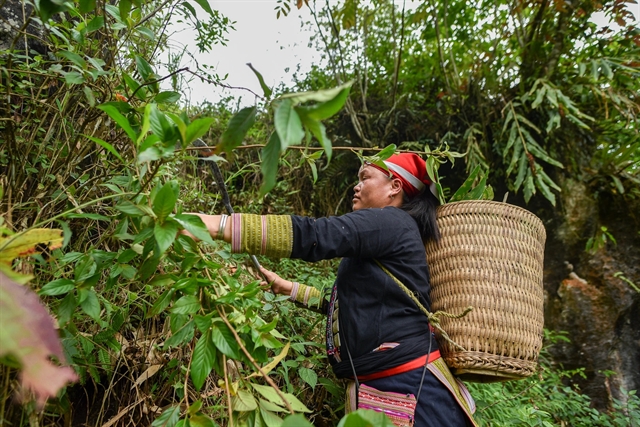 |
| An ethnic Dao woman is gathering medicinal herbs in Ba Vì forest. Photo tapchicongthuong.vn |
The medicinal plants can be used fresh or dried, or boiled for bathing or drinking. Today, the collected herbs undergo more advanced processing.
Traditional Dao medicines are now produced in five main forms: dried herbs, concentrated extracts, tinctures, topical ointments, and powders. There have been many improvements to the processing and packaging of these traditional medicines, making them more accessible to a wider market.
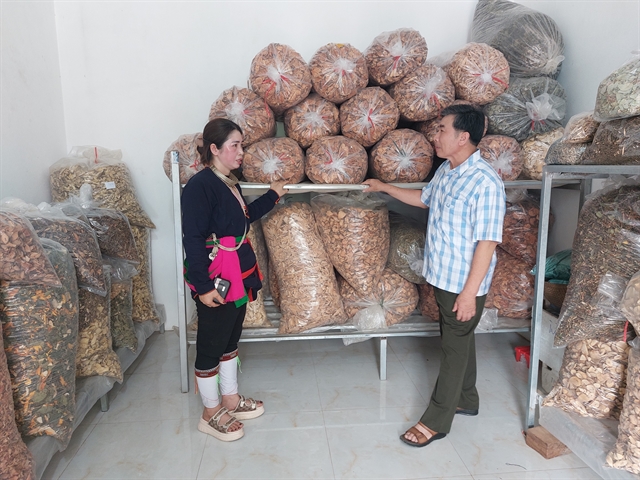 |
| The Dao people's traditional medicines are used to treat a variety of ailments. VNA/VNS Photo Đinh Thuận |
The Dao medicines are used to treat various illnesses, including joint and bone diseases, liver and kidney ailments, stomach problems, nervous disorders, skin conditions, dental and oral issues, as well as for postpartum care.
Over 80 per cent of the local families are engaged in growing, harvesting, processing, and prescribing medicinal plants. Among them, all 250 households in Yên Sơn are involved in the herbal medicine trade, and the village has been recognised as a "Traditional Medicine Village".
The family of Triệu Thị Thanh, head of the Traditional Medicine Association in Ba Vì, is renowned for their traditional remedies for joints, stomach, intestines, kidney stones, and gallstones. They have over 100 prescriptions for bone and joint, and about 50 for other illnesses.
Her family has been making traditional medicines for four generations. Her grandson is studying traditional medicine at the university to continue the family legacy.
“Everyone in our family has a strong awareness of preserving traditional medicine, as it is the cultural heritage of our ancestors and brings substantial income to us,” says Triệu Thị Oanh, Thanh's daughter-in-law.
Oanh says her family’s herbal medicines are in high demand. Through word-of-mouth recommendations, traditional medicines from her family have reached many provinces and cities across the country, even as far as the south.
Lý Thị Thu Hà’s family in Hợp Sơn Village has been making herbal remedies for generations. Their main products are those treating sinus conditions.
“Our family’s medicines sell pretty well,” she says. “We aim to pursue the medical practice that has been passed down from our ancestors, not only to increase our income but also to preserve the knowledge.”
Upholding values
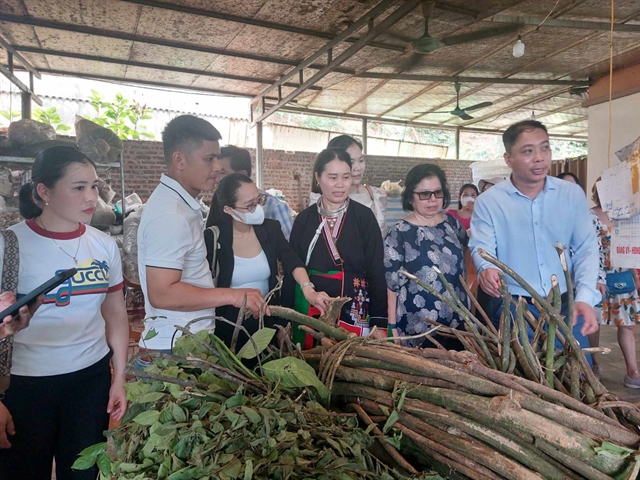 |
| The local authorities are making efforts to turn the practice of using local herbal medicines into a tourism product. VNA/VNS Photo Đinh Thuận |
The knowledge of the Dao’s traditional medicines in Ba Vì are typically passed down within families, primarily among the women.
For those outside the family, they are only taught about treatments for common ailments, while the deeper secrets for treating more serious conditions are reserved for close relatives.
Besides direct transmission and mutual learning within families, healthcare authority in Ba Vì has organised several training courses on traditional medicine. They aim to enhance the local community's understanding, covering topics such as preparation, preservation techniques, and disease diagnosis.
As the management and protection of Ba Vì's forest resources have been strengthened, the Dao people's activities in harvesting medicinal plants have been limited. Alongside sourcing raw materials from other provinces, many families have started cultivating rare medicinal plants in their gardens to supply ingredients for traditional remedies.
Through local cultivation, the community has been able to secure their supply, allowing stable and continued production.
The local authorities have established the Dao Ethnic Traditional Medicine Service Cooperative, which aims to effectively harvest and conserve rare medicinal plants, while organising training courses.
The Hà Nội tourism authority has recently collaborated with the Ba Vì District People's Committee [district government] to develop community-based tourism in Hợp Sơn.
This initiative is expected to foster socioeconomic development in the ethnic minority and mountainous regions, while ensuring sustainability through the promotion of local handicrafts and traditional cultural values of ethnic minority communities.
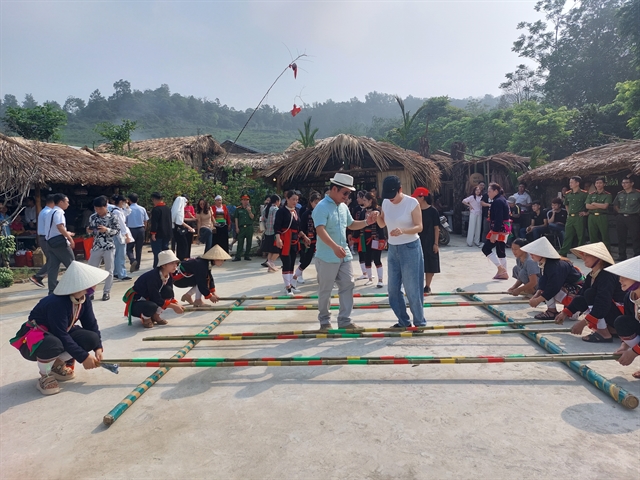 |
| Tourists to Ba Vì District join a cultural activity of the Dao ethnics. VNA/VNS Photo Đinh Thuận |
Tourists could experience nature-based healthcare practices and gain insights into the culture of the Dao ethnic group.
“The community-based tourism model serves as an effective platform to showcase the local culture and support the development of the Dao ethnic group's traditional medicinal practice in Ba Vì,” says Phạm Hải Quỳnh, director of the Asia Tourism Development Institute.
“The highlight of this model is the conservation of the Dao ethnic culture and the traditional medicinal village. It will help to foster stronger unity within the Dao community and create attractive tourism products while facilitating further economic and cultural collaboration. This serves as the starting point to integrate the local community into tourism." VNS
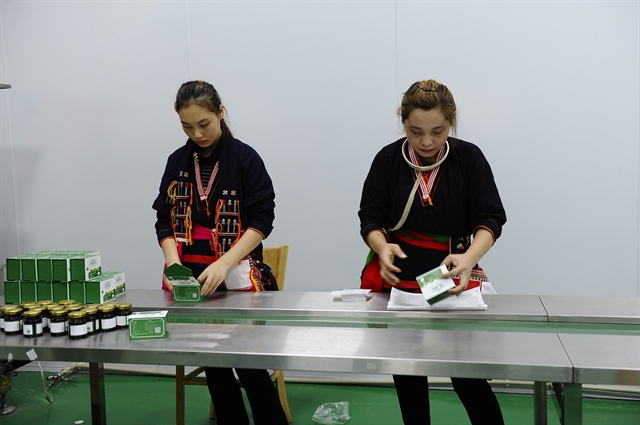 |
| Herbal medicines are packaged before going to the market. VNA/VNS Photo Mạnh Khánh |



